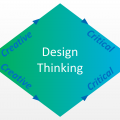A successful innovation project is desirable for the user, viable in the market and feasible with available technology. But, these well-known attributes are often not enough. Radical innovation projects demand deeper strategic involvement because they often involve firm-wide pivots or paradigm change.
For radical innovation projects, establishing strategic suitability requires deeper interrogation of the firm, for example:
- Is there a mindset for growth in the firm, with the necessary aptitude and intellectual energy for exploration and learning that will allow the project to seed and grow?
- Is there a will and sufficient energy at this time to proceed? Is the leadership and general membership psychologically ready to take on a project of this nature? It may be too ambitious. Morale may be low after a long period of disappointing performance and huge survival effort. Or, there may be a sense of complacency after a prolonged period of easy and profitable growth. Nearly always, a radical innovation project needs a high-level champion who has power and influence to bring about a sufficient level of enthusiasm and support across the organisation.
- Is there alignment with the high level strategic intent of the business?
- Is the business leadership fully behind the project, supporting and managing the necessary and sometimes profound changes that it will bring about? Or, are there large pockets of resistance waiting for a chance to torpedo it?
- Are the necessary resources available or accessible, and will the project be prioritised adequately relative to other draws on those resources?
- Does the organisation’s capability for timescale-to-deployment fit the project’s requirements?
An innovative project is strategically suitable when it is likely that a willing organisation will provide a nurturing environment. Strategic suitability is so necessary for success of an innovation project that it ranks at least equal to the three better-known attributes of desirability, viability, feasibility. Yet, too often it is ignored in practice until the later phases of a project’s development when the painful reality of a project’s failure to find traction within the organisation brings regret and recriminations to accompany the dawning realisation of wasted time and money.
Adding the fourth dimension allows a nicely balanced narrative to describe a successful innovation. According to this narrative, a successful innovation is always a new value proposition that is:
– adopted by a user because it is desirable
– delivered to a market with a business model that is viable
– enabled by a technology that makes it feasible
– provided by a firm because it is strategically suitable.
Looking at the figure, you can see that USER and MARKET are externally facing, in the sense that they describe how the organisation interacts with the external world. In contrast, the FIRM and TECHNOLOGY dimensions are focused on internal strategic and technological capabilities.
On the other hand, USER and FIRM dimensions are concerned with ‘why’; why would the prospective user want the innovation and why is it an interesting project for the firm? In contrast, the Market and Technology factors are concerned with how the innovation is to be realised and sustained, in respect of scalable business model and technological configuration respectively.








Sorry, the comment form is closed at this time.